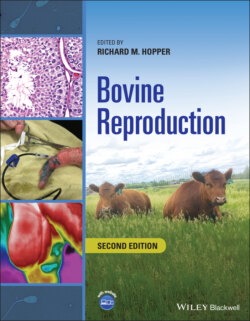Читать книгу Bovine Reproduction - Группа авторов - Страница 110
BBSE – How the Categories Compare Internationally The General Physical Examination
ОглавлениеAll BBSE standards recommend performing a general physical examination as a compulsory part of the process. There is minor variation regarding the scope of the examination, but in general it consists of an overall visual inspection for abnormalities and conformation, assessment of body condition score, examination of eyes, bite, legs/hooves, and gait assessment. In most systems, there is a general implication that the process be streamlined for efficiency. However, the UK system specifically requires auscultation of the heart and thorax in order to complete the BCVA certificate. If abnormalities are detected, all systems provide for a more detailed physical examination either by using written comments or by selecting further options within the available software. Yet, in all systems, there was either minimal guidance or ambiguity surrounding the decision‐making process when conformational and possibly heritable abnormalities were detected. For example, conditions that can have varied degrees of severity such as interdigital fibromas, joint effusion in the hocks, sickle hocks, post‐leggedness, and scissor‐claw were all mentioned as possible reasons for bulls failing the evaluation. To guide clinicians in these instances, the UK and South African systems provide brief instruction on the back of the certificates, but leave the assessment of severity and final classification to be based on the clinical judgment of the attending veterinarian. Similarly, while the SFT manual provides detailed descriptions of many of the abnormalities that will be encountered, clear guidance on when to pass or fail the bull is lacking. For many of the conditions, the Australian system provides descriptions and, in some instances, scoring templates to assist classification. Yet, commonly the advice simply states that “severe” cases should not pass, leaving it up to the veterinarian to determine what is severe and what is acceptable. This situation may result in enough variation in the results to adversely affect the integrity of the process in the eyes of some producers.
In reviewing the processes of the general physical examination and the possibilities for variation in interpretation of the information both within and between systems, the question is raised of whether it is the role of the BBSE process to fail a bull based on the possibility it may have a defect that may affect it at some stage in the future. It may be prudent to cull such a bull if it is to sire seed‐stock, but not so relevant for a bull entering a commercial herd. Consequently, there is a need for all parties to be clear on why the evaluation is being performed, and also to have the option to vary the examination so it is relevant to the managerial context.
